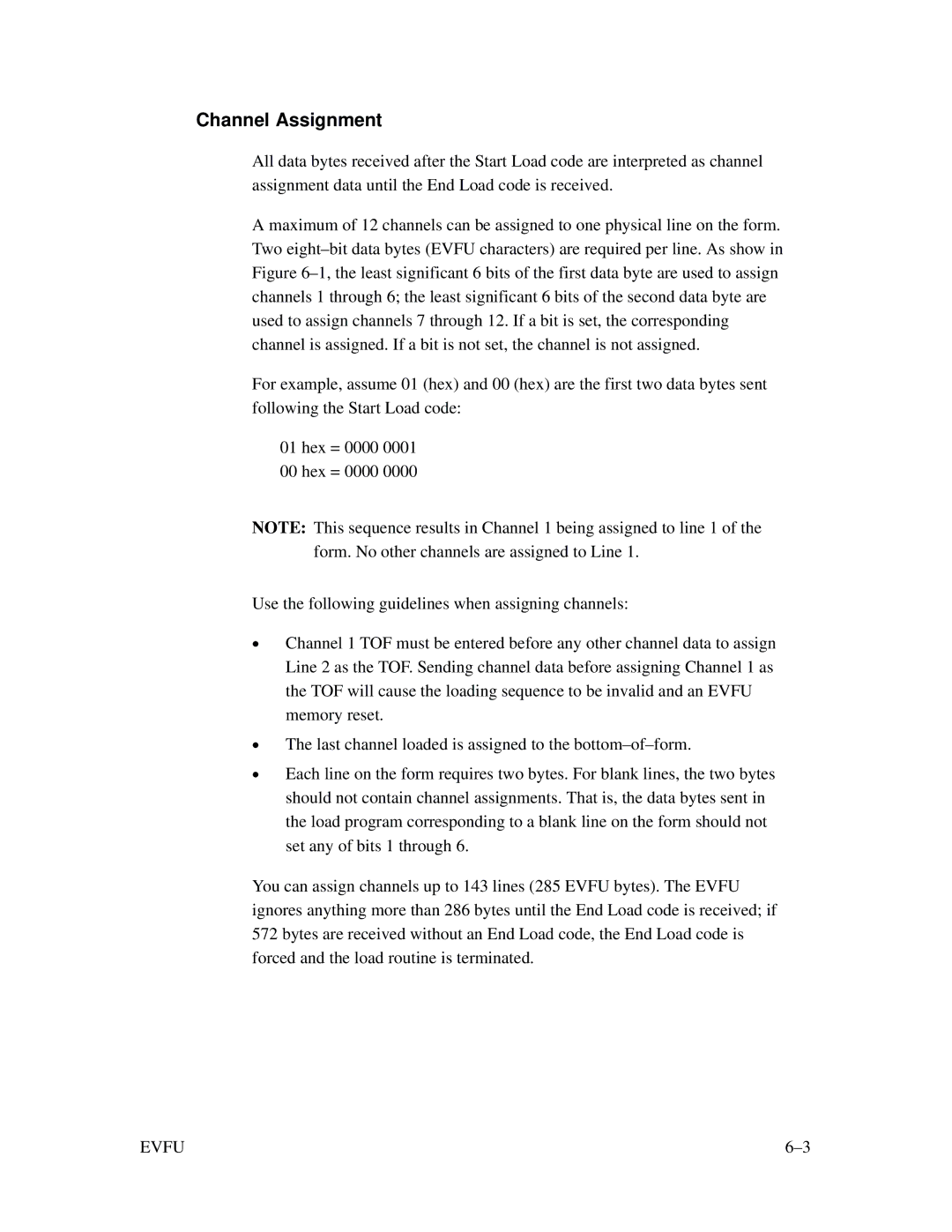Channel Assignment
All data bytes received after the Start Load code are interpreted as channel assignment data until the End Load code is received.
A maximum of 12 channels can be assigned to one physical line on the form. Two
For example, assume 01 (hex) and 00 (hex) are the first two data bytes sent following the Start Load code:
01 hex = 0000 0001
00 hex = 0000 0000
NOTE: This sequence results in Channel 1 being assigned to line 1 of the form. No other channels are assigned to Line 1.
Use the following guidelines when assigning channels:
•Channel 1 TOF must be entered before any other channel data to assign Line 2 as the TOF. Sending channel data before assigning Channel 1 as the TOF will cause the loading sequence to be invalid and an EVFU memory reset.
•The last channel loaded is assigned to the
•Each line on the form requires two bytes. For blank lines, the two bytes should not contain channel assignments. That is, the data bytes sent in the load program corresponding to a blank line on the form should not set any of bits 1 through 6.
You can assign channels up to 143 lines (285 EVFU bytes). The EVFU ignores anything more than 286 bytes until the End Load code is received; if 572 bytes are received without an End Load code, the End Load code is forced and the load routine is terminated.
EVFU |
